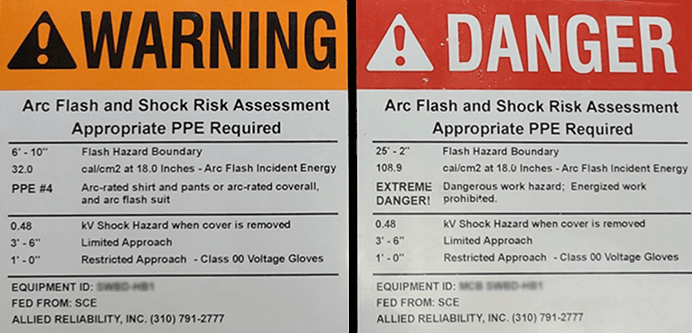Understanding Workplace Fire Risk Assessment and the Importance of an Arc Flash Study
Understanding Workplace Fire Risk Assessment and the Importance of an Arc Flash Study
Blog Article
 Workplace safety is a critical component of any successful business operation. Among the various threats that can endanger both personnel and infrastructure, fire hazards and electrical risks rank among the most severe. Two essential tools in mitigating these dangers are the workplace fire risk assessment and the Arc Flash Study. While they address different types of hazards, both are indispensable in creating a comprehensive safety plan for any facility that deals with electrical equipment, machinery, or flammable materials.
Workplace safety is a critical component of any successful business operation. Among the various threats that can endanger both personnel and infrastructure, fire hazards and electrical risks rank among the most severe. Two essential tools in mitigating these dangers are the workplace fire risk assessment and the Arc Flash Study. While they address different types of hazards, both are indispensable in creating a comprehensive safety plan for any facility that deals with electrical equipment, machinery, or flammable materials.
What is a Workplace Fire Risk Assessment?
A workplace fire risk assessment is a structured evaluation process designed to identify fire hazards, assess the risks they pose, and implement measures to mitigate or eliminate those risks. This is not just a best practice—it’s a legal requirement in many countries, particularly where occupational health and safety laws mandate proactive fire safety planning.
The process generally involves:
Identifying potential fire hazards (flammable materials, electrical faults, heat sources).
Determining who might be at risk (employees, visitors, contractors).
Evaluating the likelihood and potential impact of a fire incident.
Implementing control measures (fire extinguishers, alarms, evacuation plans).
Recording findings and regularly reviewing the assessment.
A thorough fire risk assessment can mean the difference between a minor incident and a catastrophic event. It helps businesses prepare for emergencies, ensure compliance with safety regulations, and most importantly, protect lives and assets.
The Overlooked Danger: Electrical Hazards and Arc Flash
While fire risk assessments are common, many companies overlook the specific dangers posed by electrical systems—especially arc flash incidents. An arc flash is a type of electrical explosion caused by a fault or short circuit through the air. The result is a sudden release of energy, generating intense heat, light, and pressure, which can lead to severe injuries or even fatalities.
This is where an Arc Flash Study becomes essential.
What is an Arc Flash Study?
An Arc Flash Study (also known as an arc flash hazard analysis) is a detailed engineering study designed to evaluate the potential for arc flash incidents in an electrical system. The purpose is to:
Determine the amount of energy that could be released during an arc flash.
Define safe working boundaries (arc flash boundaries).
Recommend personal protective equipment (PPE) for workers.
Ensure proper labeling of electrical panels and gear.
Inform maintenance and operational procedures to minimize risk.
The National Fire Protection Association (NFPA) 70E standard provides the framework for conducting an Arc Flash Study and is widely adopted in industries across North America and beyond.
Why Both Assessments Are Necessary
Many businesses wrongly assume that a fire risk assessment alone is sufficient to address all fire-related hazards. However, this approach can leave a critical gap. While a workplace fire risk assessment might identify general fire risks, such as combustible storage or poor housekeeping, it doesn’t delve into the complexities of electrical systems or the explosive nature of an arc flash event.
On the other hand, an Arc Flash Study is specialized and highly technical. It focuses specifically on electrical systems—an area not thoroughly covered in general fire assessments. By integrating both evaluations, businesses can address a full spectrum of risks from flammable materials to electrical catastrophes.
The Business Case for Comprehensive Risk Assessment
Investing in a thorough workplace fire risk assessment and a professionally conducted Arc Flash Study isn’t just about compliance—it’s also smart business. The benefits include:
Enhanced worker safety: Fewer injuries mean lower insurance premiums and reduced absenteeism.
Regulatory compliance: Avoid costly fines and legal repercussions from failing to meet occupational safety standards.
Improved operational continuity: Fires and arc flash incidents can shut down operations for days or even weeks. Prevention is far less costly than recovery.
Increased awareness: Safety training based on real data from these assessments fosters a culture of safety among employees.
Best Practices for Implementation
To effectively incorporate both a fire risk assessment and an Arc Flash Study:
Hire qualified professionals with experience in fire safety and electrical engineering.
Schedule regular reviews—annually or whenever major changes occur in processes or equipment.
Engage employees in safety training based on assessment findings.
Maintain proper documentation for audits and continuous improvement.
Conclusion
In today’s complex work environments, especially those involving industrial processes or heavy electrical usage, safety cannot be left to chance. A workplace fire risk assessment is your first line of defense against fire hazards, while an Arc Flash Study provides the specialized analysis needed to address dangerous electrical events. Together, they form a powerful safety strategy that not only protects people and property but also strengthens the overall resilience of your business.
Don’t wait for a fire or electrical accident to reveal the weaknesses in your safety protocols. Take proactive steps today—your employees, your assets, and your bottom line will thank you.
Report this page